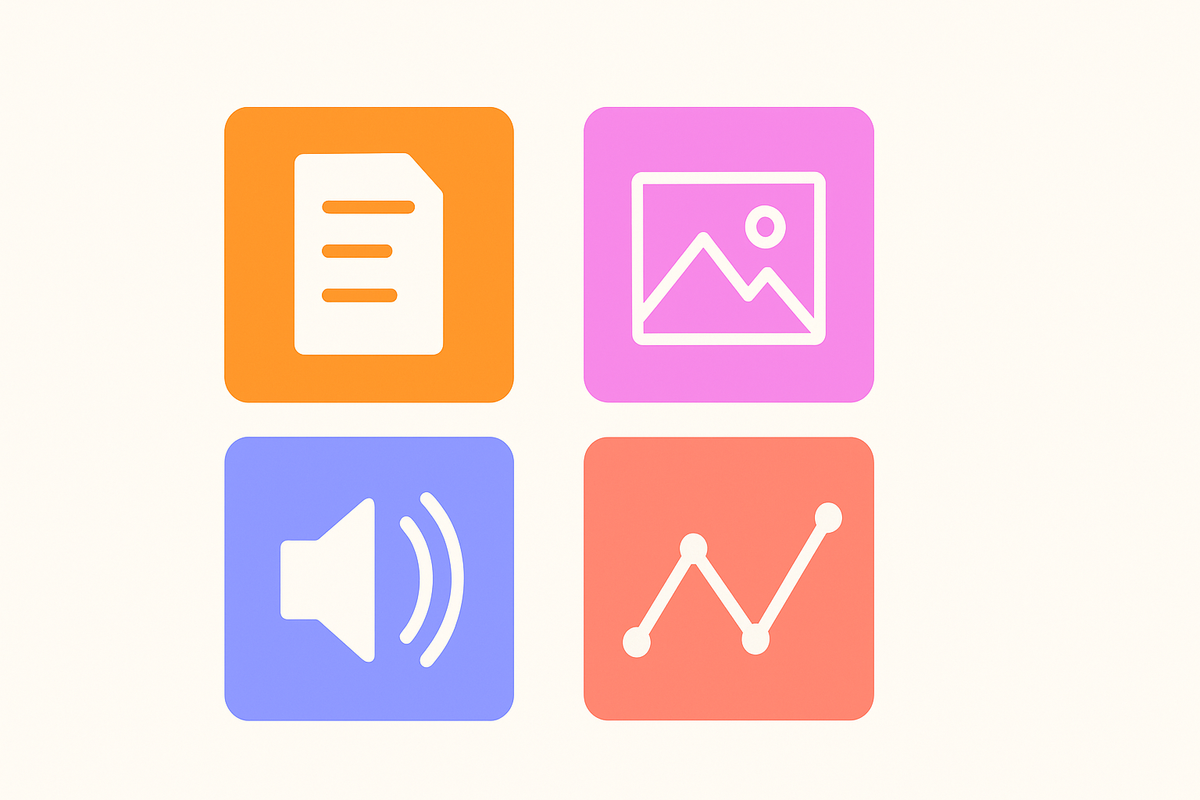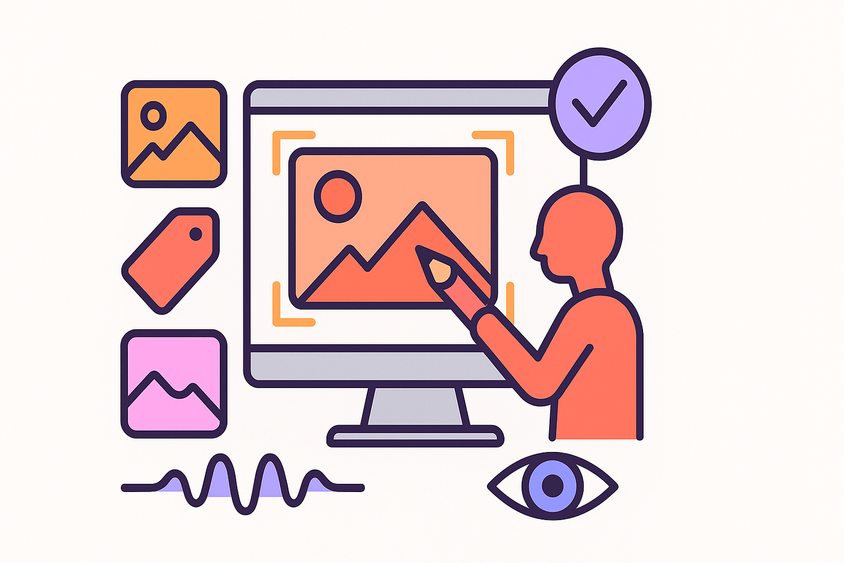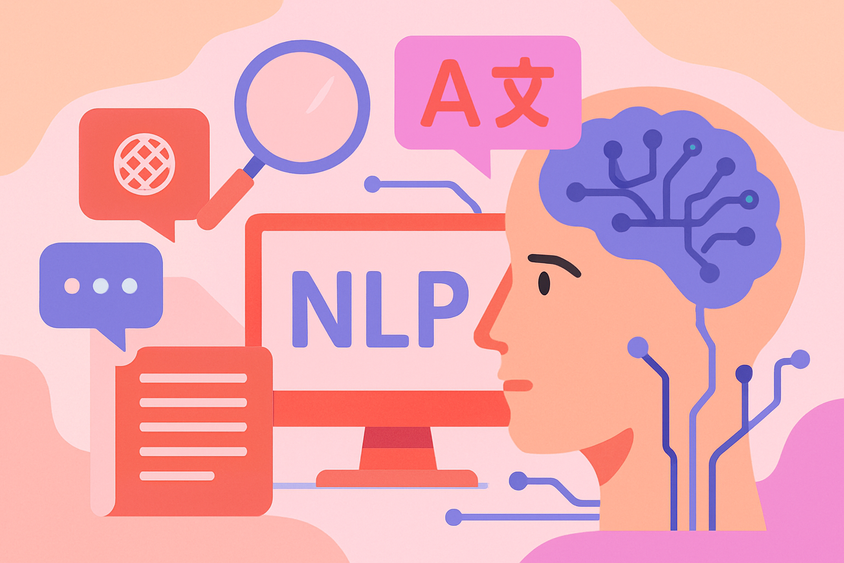A Guide to Data Modalities

AI systems don’t just learn from data—they learn from specific types of data. Whether you're training a model to caption photos, analyze sentiment, or extract information from documents, the type of data you use shapes how your model performs.
In this guide, we’ll break down the most common data modalities in machine learning, show how they differ, and explore how tools like Label Studio help teams label and manage data across these formats.
What Are Data Modalities?
A data modality refers to a distinct format or structure of input data—text, images, audio, video, or time series, each requiring different approaches for labeling and analysis. Understanding the strengths and challenges of each modality is key to building performant, adaptable machine learning systems. That’s why tools like Label Studio, which support diverse data types out of the box, have become essential for teams managing complex AI workflows.
Core Data Modalities in Machine Learning
Below are two of the most widely used data types in today’s AI systems. Each section includes a link to a detailed guide focused on labeling strategies, tools, and real-world use cases.
1. Image Labeling
Visual data is foundational to everything from autonomous vehicles to healthcare diagnostics. Image labeling involves tagging objects, defining regions, or classifying entire images to help models interpret visual input. Key tasks: object detection, image classification, segmentation Common use cases: autonomous driving, medical imaging, retail shelf audits
2. Natural Language Processing (NLP)
Text is one of the most complex and information-rich data types in AI. Natural Language Processing (NLP) enables machines to understand, generate, and reason about human language. Labeling for NLP ranges from document-level classification to token-level tagging and prompt engineering for large language models. With Label Studio, teams can customize their labeling interfaces for tasks like named entity recognition, sentiment tagging, or even prompt-response evaluation—without writing code.Key tasks: sentiment analysis, named entity recognition (NER), summarization, intent detection Common use cases: chatbots, content moderation, document automation, LLM fine-tuning
Other Emerging Modalities
While image and text are dominant today, machine learning increasingly relies on other data types as well:
- Audio: speech recognition, speaker ID, sound classification
- Video: activity detection, frame labeling, scene classification
- Time Series: IoT signals, financial data, medical monitoring
- Multimodal: combining text, image, audio, or other formats for richer model context (e.g., VQA or text-to-image generation)
Why Your Labeling Tool Needs to Support Multiple Modalities
Each data type comes with unique annotation challenges. That’s why it’s important to use a flexible labeling platform like Label Studio—one that supports text, images, audio, and more with customizable workflows, plug-in support, and review pipelines that scale with your team.
Look for tools that offer:
- Custom interfaces for each modality
- Pre-built templates for common tasks
- Model-assisted labeling and QA
- Robust support for versioning and review cycles
Build Your AI on the Right Data Foundations
The more you understand about your data types, the better you can design a labeling strategy that sets your model up for success.
Get started with our modality-specific guides:
Frequently Asked Questions
Frequently Asked Questions
What is a data modality in machine learning?
A data modality refers to a specific type of data—such as text, images, audio, or video—that a machine learning model processes and learns from.
Why do data modalities matter in AI?
Different data modalities require different labeling techniques and model architectures. Choosing the right modality helps improve model accuracy and relevance for your task.
What are common types of data modalities?
The most common data modalities include text (NLP), images (computer vision), audio (speech recognition), video, and time series data from sensors or logs.
What is the difference between unimodal and multimodal data?
Unimodal data involves a single data type (e.g., just text), while multimodal data combines multiple modalities (e.g., text and images) to give models a richer context.

